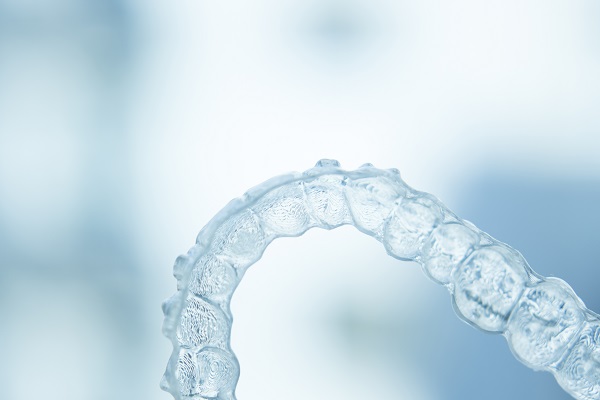Can Invisalign Fix Spaces Between Teeth?

There is a wide range of issues that Invisalign® clear aligners can be used to treat, including gaps in the teeth. Also known as diastema, spaces can appear between the front teeth that can be visible when a person smiles. While there are often no oral health issues that develop due to diastema, some people may wish to seek treatment for cosmetic reasons. Clear aligners are one option for moving the teeth closer together for a more consistent appearance.
What causes gaps in the teeth?
While some people have diastema due to genetic reasons, there are several other factors that can lead to gaps in the teeth:
- Jaw size: In some situations, a large jaw that is disproportionate to the size of the teeth can leave a gap because the teeth are too small to fill out the space; this issue may even be hereditary and be present in several family members
- Bad habits in children: Even if a person is born with teeth that start out close together, thumb sucking and pacifier use can cause the teeth to pull forward and away from each other
- Incorrect swallowing reflex: For people of all ages, an incorrect swallowing reflex called tongue thrust can put pressure on the front teeth, causing them to spread apart due to the tongue pushing against the teeth instead of the roof of the mouth when swallowing
- Gum disease: Gum disease can damage the tissue surrounding the teeth, causing bone loss and possible spaces between the teeth
- Tissue overgrowth: Some people have a piece of tissue that grows between the two top front teeth, causing a gap
How can Invisalign® treat diastema?
Clear aligners can be used alone or in conjunction with other treatments to close gaps in the teeth, depending on the root of the issue. For situations causes by a disproportionate jaw to tooth size, thumb sucking, or tongue thrust, Invisalign® trays can be worn to slowly prod each individual tooth towards the other. However, aligners have limits as to how much they can adjust. In general, these braces can close about 6mm total per arch. If the gaps are very large or multiple teeth are missing, then an alternative may be necessary.
For gaps caused by gum disease or excess gum tissue between the front teeth, clear aligners may be combined with other treatments to more effectively address the issue. Often with gum disease, the actual diseased tissue will need to be treated or removed from the mouth. If significant bone loss occurred, a bone graft may be necessary to restore volume to the jaw. Removing any teeth that cannot be salvaged and placing dental implants may also be part of the treatment process. For excess tissue, a surgery called a frenectomy may be required to reshape the gumline.
Conclusion
No matter the cause, if you have embarrassing gaps in the teeth that you want to close, the first step is to ask a dentist about using Invisalign® to close the spaces. From here, they can examine the situation, determine the most likely cause for the gap, and propose a solution.
Request an appointment here: https://davisanddingle.com or call Davis & Dingle Family Dentistry at (803) 567-1804 for an appointment in our Columbia office.
Check out what others are saying about our services on Yelp: Read our Yelp reviews.
Recent Posts
Dentures are a great solution for people who have lost some or all of their teeth. They can restore one's ability to eat and speak properly and improve the overall appearance of your smile. However, you may have questions about the denture process, from the initial consultation to the final fitting. This blog article will…
Many who have lost their natural teeth can smile confidently again, thanks to dentures. These oral appliances restore chewing, speaking function, and appearance after someone has lost a few or all of their teeth. Dentures come in a full set for those who have lost most or all of their teeth and a partial for…
Dentures restore both function and aesthetics, enabling individuals to speak, eat, and smile with confidence. However, over time, they will require professional denture repairs. Just like natural teeth, dentures require proper care and maintenance to function effectively. Sometimes, even with proper care, dentures may show signs of wear and tear that necessitate professional intervention. Recognizing…
Dentures can restore confidence in one’s smile and quality of life for those who have suffered tooth loss. However, it may not happen overnight, and getting used to dentures will take some time. Still, many denture wearers find the benefits of dentures are worth the wait. Though it may take some time to acclimate to…


